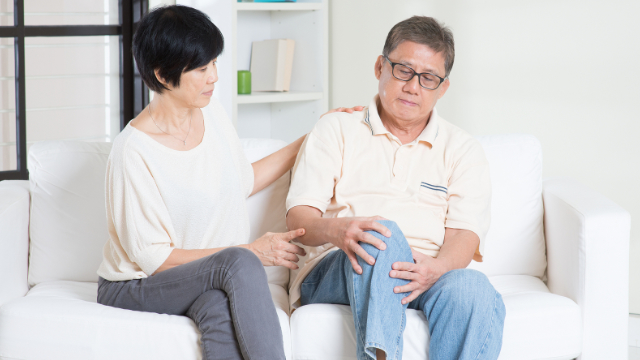
Osteoarthritis currently affects as many as 31 million Americans, making it by far the most common of a group of conditions that are all generally referred to as “arthritis.” Although all types of arthritis affect the joints and lead to a similar set of symptoms, osteoarthritis stands out due to its high incidence and because it’s a progressive condition that gets worse over time.
In a normal joint, a type of tissue called cartilage surrounds and protects the ends of each bone, which prevents them from touching each other and helps to absorb shock from movement and pressure. In osteoarthritis, this layer of cartilage begins to gradually wear away due to a number of possible factors. This means that there is less protection and more friction between the bones in the affected joint, and over time, this process can lead to inflammation and damage of many structures within the joint.
Osteoarthritis can develop in just about any joint, but the vast majority of cases occur in the knees and hips. The reason is that the knees and hips are both weight-bearing joints that must bear the impact of our bodyweight every time we’re on our feet. Taking on too much weight or pressure on these joints can cause the cartilage to wear away faster and accelerate the damage that occurs in osteoarthritis. This is why being overweight or obese is a major risk factor for osteoarthritis in all weight-bearing joints.
The symptoms of hip and knee osteoarthritis are quite similar: pain, swelling, tenderness, and stiffness in the affected joint, as well as a possible “popping,” “cracking,” or “grinding” sensation that comes about with movement. Pain usually tends to get worse during and after activity, and has the added effect of making it difficult to move the joint through its complete range of motion. The end result of these symptoms is being impaired in many activities and movements that involve the legs, such as walking, running, standing up from a chair, and ascending or descending stairs.
Only a physical therapist will focus on finding ways to help you move better
If you experience symptoms of knee or hip osteoarthritis, it’s usually safe to say that you’re next goal is to find some pain relief as fast as possible. There are a number of treatment options available for these types of conditions, from the most mild of simply resting the affected joint, to the most extreme of undergoing surgery to replace the damaged joint. But the best possible choice you can make to manage your osteoarthritis is to see a physical therapist.
Physical therapists are movement experts that are trained to help patients move more easily and efficiently. While there are many interventions out there that claim to relieve pain and improve function, only physical therapy will provide you with a comprehensive treatment plan that involves a variety of movement-based strategies to address your deficits and strengthen any areas of weakness. Physical therapy focuses on finding active ways to help you overcome your symptoms, and it trains patients to continue these healthy habits in the long term.
Each physical therapy program will differ depending on the severity of the osteoarthritis, and the age and abilities of the patient, but most interventions used fall into one of the following three categories:
- Pain-relieving modalities: your therapist may use ice, heat, ultrasound, machines that emit electrical currents (TENS), or other similar treatments to reduce your pain levels on the spot
- Exercise therapy: exercise is central to all physical therapy programs and is crucial for helping you overcome your impairments and be able to better move your affected joint; the two primary types of exercise therapy are:
- Stretching exercises: since flexibility is usually reduced in the hip or knee affected by osteoarthritis, these exercises will help to improve your ability to bend and straighten your knee or rotate your hip with movements you can tolerate
- Strengthening exercises: lack of movement due to pain can result in muscle weakness and even less ability to complete tasks normally; building the muscles back up around the hip or knee has been associated with less pain and better function, and will therefore be a major focus on most treatment plans
- Manual therapy: this is a hands-on treatment in which the physical therapist will gently move muscles and joints to improve their motion, flexibility, and strength, and will usually target areas that are difficult to treat on your own
There is a great deal of research that has shown both exercise therapy and manual therapy to be effective treatments for patients with hip or knee osteoarthritis. In one study published in 2016, it was found that “An exercise therapy intervention provides short-term as well as long-term benefits in terms of reduction in pain, and improvement in physical function among people with hip osteoarthritis.” Another study published in July of 2018 highlighted how greater participation levels in physical therapy lead to better outcomes for patients with knee osteoarthritis, with a conclusion that stated:
Increased number of physical therapy visits was associated with improved outcomes, and some of this benefit persisted eight months after physical therapy ended.
Finally, a study published last September showed how even better outcomes can be achieved when both exercise therapy and manual therapy are combined. In this high-quality analysis, researchers reviewed a number of studies on the topic and found that:
Orthopedic manual therapy interventions with exercise therapy compared with exercise therapy alone provide short term benefits in reducing pain, improving function, and stairs ascending-descending time in people with knee osteoarthritis.
